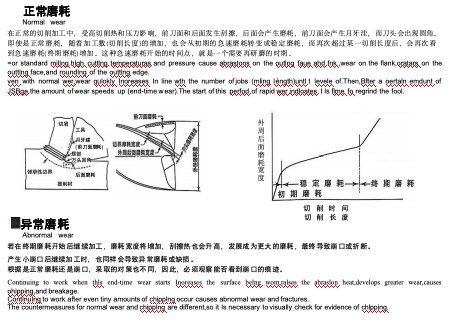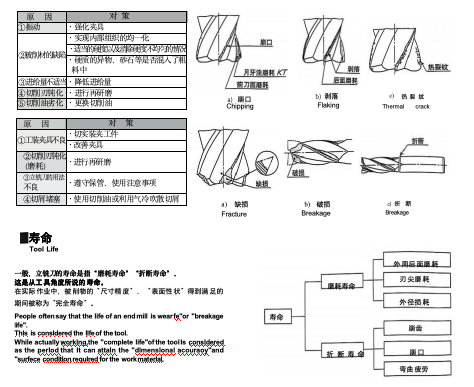News
Thread end mills redefine precision machining with chip-free technology
Release time:
2025/07/14
Precision Threading Reimagined: The Rise of Thread End Mills in High-Performance Machinin
In today’s advanced manufacturing landscape, where speed, precision, and versatility are crucial, thread end mills have emerged as a game-changer in threading operations. Designed to meet the increasing demands of high-precision machining, these specialized tools are gaining attention for their superior performance in working with lightweight non-ferrous metals such as aluminum alloys, magnesium alloys, and copper alloys. Their ability to maintain dimensional accuracy, reduce machining errors, and enhance productivity has positioned them at the forefront of modern machining practices.


Thread end mills differ significantly from traditional tapping tools. While taps cut threads by displacing material in a single pass, thread end mills create threads through controlled helical interpolation using a CNC machine. This method allows for far greater flexibility, including the ability to thread both blind and through holes, and to create internal and external threads with minimal tool changes. For high-volume and high-precision industries like aerospace, automotive, and electronics, this capability can significantly streamline operations.
One of the most remarkable features of thread end mills is their effectiveness in machining soft, ductile materials without creating chips. Instead of shearing or cutting through the material in the conventional sense, the thread end mill causes plastic deformation—allowing the material to flow into shape smoothly. This chip-free machining process minimizes tool wear, reduces the risk of damage to delicate components, and eliminates chip evacuation issues, which can be problematic in enclosed or complex geometries.
In machining aluminum alloys, for instance, thread end mills offer high feed rates and excellent surface finishes. Their cutting geometry is optimized to prevent built-up edge (BUE), a common issue when machining softer metals. Similarly, in magnesium alloys—which are notoriously difficult due to their highly reactive nature and low melting point—thread end mills provide the thermal stability and precision necessary to ensure process reliability. Copper alloys, often used for their conductivity and corrosion resistance, also benefit from the non-chip-forming capabilities of these tools, allowing for consistent threading even in complex assemblies.
The demand for such precise tooling has been further accelerated by the growing use of CNC technology in production lines. Modern CNC systems are capable of executing intricate toolpaths required by thread end mills, including multi-start threads and variable pitch configurations. This synergy between advanced machinery and cutting-edge tooling has enabled manufacturers to meet tight tolerances and deliver uniform results across batches—factors that are critical in industries where quality and consistency are non-negotiable.
Moreover, thread end mills are ideal for continuous and stable processing. Their robust design, often incorporating high-performance coatings such as TiAlN or DLC, enhances tool life and thermal resistance. The ability to operate for extended periods without interruptions is especially valuable in unattended or semi-attended production environments, where machine uptime directly impacts operational efficiency.
Sustainability is another advantage. Traditional tapping often results in significant material waste due to chip generation. Thread end mills, by avoiding chip formation, contribute to cleaner, more sustainable manufacturing processes. They also reduce the need for coolant and cutting fluid, lowering both environmental impact and operational costs.
The rising popularity of thread end mills reflects a broader shift toward smarter and more efficient production technologies. As manufacturers seek to optimize every aspect of their machining processes, tools that offer precision, reliability, and adaptability—like thread end mills—are becoming indispensable. From aerospace components that demand flawless threading to medical devices where accuracy can mean the difference between success and failure, these tools are proving their value in critical applications around the globe.
In conclusion, the thread end mill stands as a symbol of innovation in the world of precision machining. With their ability to machine lightweight alloys without chip formation, facilitate continuous high-precision processing, and integrate seamlessly into modern CNC workflows, they represent the future of threading technology. As industries continue to evolve, tools like these will play a vital role in ensuring manufacturing keeps pace with the demands of innovation.
keywords
Previous Page
Previous Page:
Contact Information
Tel: +86-18861298766
E-mail: jeni@vellfire-tools.com
Whatsapp:8618861298766
Address: No. 156, Nanxi Road, Xinbei District, Changzhou City (Wilfa Recutting Milling Cutter and High Efficiency Drill Wholesale)




Copyright© 2023 Jiangsu Vellfire Precision Alloy Co., Ltd. All Rights Reserved



